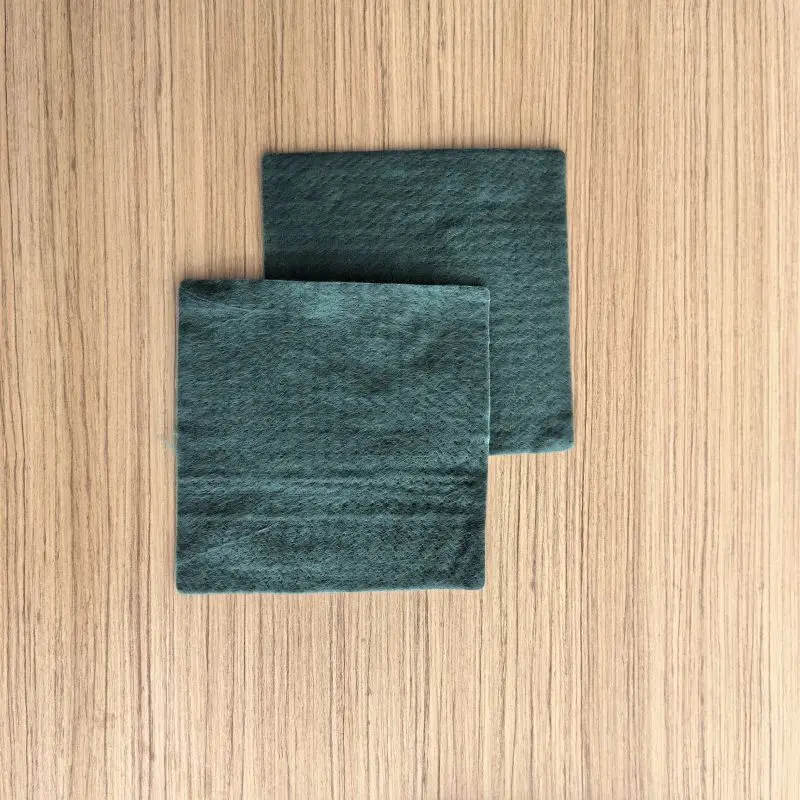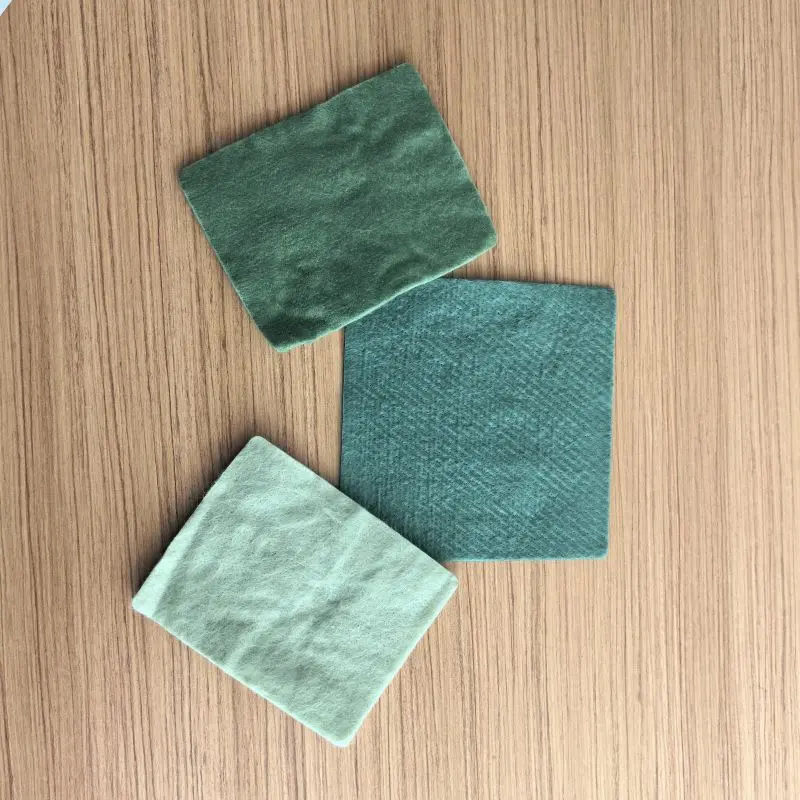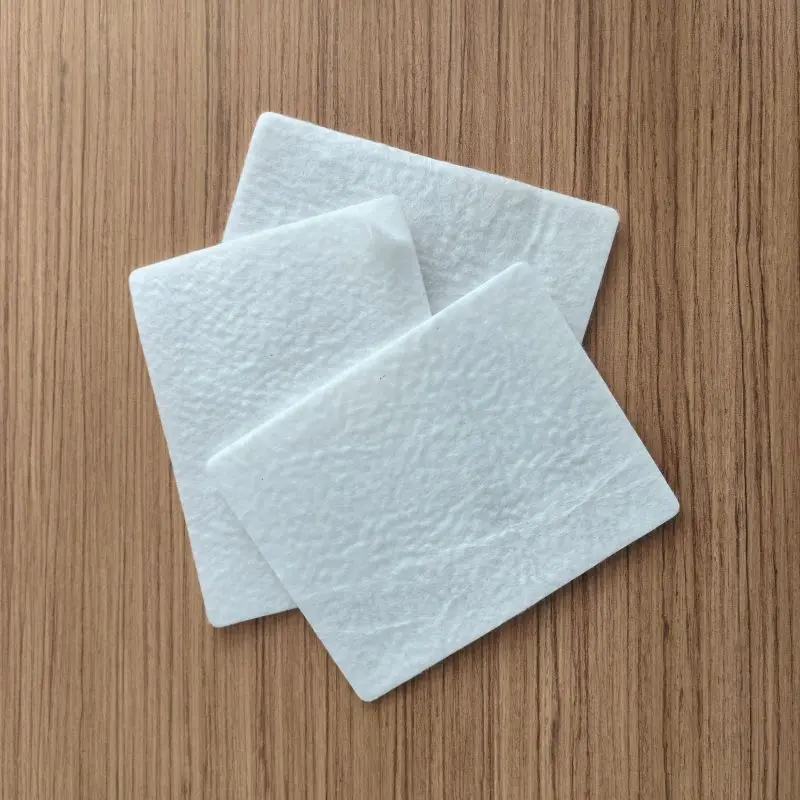Geotextiles are an essential component in many civil engineering and construction projects, providing solutions for filtration, separation, reinforcement, and drainage. They are broadly categorized into two types: non-woven and woven geotextiles. While both serve critical roles in soil stabilization and other applications, they differ significantly in their characteristics, materials, technical parameters, and ideal use cases. This article explores the differences between non-woven and woven geotextiles, helping you choose the right material for your project.
Characteristics
Non-Woven Geotextile

Structure: Non-woven geotextiles are made by bonding fibers together through mechanical needling, heat, or chemical processes, resulting in a fabric that resembles felt.
Flexibility: They are typically more flexible and easier to handle, making them suitable for applications requiring contouring around irregular surfaces.
Permeability: Non-woven geotextiles are highly permeable, allowing water to pass through easily, which makes them ideal for filtration and drainage applications.
Thickness and Density: These fabrics are generally thicker than woven geotextiles, providing better cushioning and protection in certain applications.
Woven Geotextile

Structure: Woven geotextiles are created by weaving threads or yarns together in a tight, grid-like pattern. This method results in a fabric that is more robust and rigid.
Strength: Woven geotextiles offer superior tensile strength compared to non-woven fabrics, making them ideal for load-bearing applications like soil reinforcement.
Stability: Due to their structure, woven geotextiles are less likely to stretch under load, providing better long-term stability in retaining wall and road construction.
Lower Permeability: Woven geotextiles generally have lower permeability, which can be a disadvantage in drainage applications but an advantage in areas where water flow needs to be restricted.
Materials
Non-Woven Geotextile
Materials Used: Non-woven geotextiles are typically made from synthetic polymers like polypropylene (PP) or polyester (PET).
Manufacturing Process: The fibers are bonded together using heat (thermally bonded), mechanical entanglement (needle-punched), or chemical binding, resulting in a fabric with a random fiber orientation.
Woven Geotextile
Materials Used: Woven geotextiles are usually made from high-strength polymers like polypropylene (PP) or polyethylene (PE), with the threads being woven into a consistent, grid-like structure.
Manufacturing Process: The weaving process involves interlacing two sets of yarns at right angles, resulting in a strong, durable fabric with a specific pattern.
Technical Parameters
| Parameter | Non-Woven Geotextile | Woven Geotextile |
|---|---|---|
| Tensile Strength | Moderate, typically 5-50 kN/m | High, typically 50-200 kN/m |
| Permeability | High, allowing for good water flow | Low to moderate, depending on the weave |
| Elongation | High, up to 50% elongation at break | Low, less than 20% elongation at break |
| Thickness | Typically 0.5-5 mm | Typically 0.2-1 mm |
| Puncture Resistance | Moderate to high, depends on the bonding method | High, due to the woven structure |
| UV Resistance | Can be high with UV stabilizers | Typically high, depending on material |
Application Scenarios
Non-Woven Geotextile
Filtration: Due to their high permeability, non-woven geotextiles are ideal for filtration applications where water needs to pass through but soil particles must be retained, such as in drainage systems and under riprap.
Separation: Used to prevent mixing of different soil layers, especially in road construction, where a non-woven fabric can separate subgrade from aggregate layers.
Protection: Their thickness makes them suitable for protecting geomembranes in landfill projects or under heavy objects that could puncture other materials.
Drainage: Effective in sub-surface drainage systems, allowing water to flow while preventing soil clogging.
Woven Geotextile
Reinforcement: With their high tensile strength, woven geotextiles are often used in reinforcement applications, such as in retaining walls, embankments, and road construction.
Stabilization: Ideal for stabilizing soft soils, woven geotextiles provide a strong foundation layer, distributing loads and improving the bearing capacity of the soil.
Erosion Control: Used in erosion control projects, especially in coastal or riverbank applications, where their strength helps prevent soil loss.
Separation with Strength: In projects where both separation and reinforcement are required, such as under roads and railways, woven geotextiles provide the necessary strength and durability.
Both non-woven and woven geotextiles offer unique advantages depending on the specific requirements of a project. Non-woven geotextiles excel in filtration, drainage, and protection applications due to their high permeability and flexibility. On the other hand, woven geotextiles are superior in scenarios requiring reinforcement and stabilization, thanks to their high tensile strength and rigidity. Understanding the differences between these materials will help in selecting the most appropriate geotextile for your project, ensuring both performance and cost-effectiveness.
Non-Woven Geotextile vs. Woven Geotextile: Pros and Cons
Non-Woven Geotextile
Pros:
High Permeability:
Excellent water flow characteristics, making it ideal for filtration and drainage applications.
Flexibility:
More flexible and easier to conform to irregular surfaces, making installation simpler in complex terrains.
Cushioning and Protection:
Provides good cushioning, protecting underlying materials from damage, especially in geomembrane applications.
Versatility:
Suitable for a wide range of applications, including filtration, separation, drainage, and protection.
Cons:
Lower Tensile Strength:
Generally has lower tensile strength compared to woven geotextiles, which limits its use in heavy load-bearing applications.
Shorter Lifespan in Certain Conditions:
May degrade faster than woven geotextiles under certain conditions, such as continuous heavy loads.
Less Suitable for Reinforcement:
Not as effective as woven geotextiles in soil reinforcement applications, particularly where high strength is required.
Woven Geotextile
Pros:
High Tensile Strength:
Superior tensile strength makes it ideal for reinforcement and stabilization applications, such as in retaining walls and road construction.
Long-Term Stability:
Offers better long-term stability, especially in load-bearing applications, due to its resistance to stretching.
Durability:
More resistant to puncture and tearing, providing long-lasting performance in demanding environments.
Effective in Erosion Control:
Strong and durable, making it highly effective in preventing soil erosion, especially in coastal and riverbank applications.
Cons:
Lower Permeability:
Typically has lower water permeability, which can be a disadvantage in drainage or filtration applications.
Less Flexibility:
Stiffer and less flexible, which can make it more challenging to install on irregular or uneven surfaces.
Higher Cost:
Often more expensive than non-woven geotextiles, particularly in applications where high strength and durability are necessary.
Limited Cushioning:
Does not provide as much cushioning as non-woven geotextiles, which can be a drawback in applications where protection of underlying materials is required.
Summary:
Non-Woven Geotextile is best suited for filtration, drainage, and protection due to its high permeability and flexibility. However, it has lower tensile strength and may not be ideal for reinforcement.
Woven Geotextile is ideal for reinforcement, stabilization, and erosion control due to its high tensile strength and durability, though it is less permeable and flexible than non-woven geotextiles.
Choosing between non-woven and woven geotextiles depends on the specific needs of your project, including the required strength, permeability, and application type.
Non-Woven Geotextile vs. Woven Geotextile price

The price of non-woven and woven geotextiles varies depending on factors such as material quality, tensile strength, roll size, and manufacturer. Below is a general comparison of the price ranges for each type:
Non-Woven Geotextile Price
| Specification | Price Range (USD per square meter) |
|---|---|
| Low-Tensile Strength (5-20 kN/m) | $0.30 - $0.70 |
| Medium-Tensile Strength (20-50 kN/m) | $0.50 - $1.00 |
| High-Tensile Strength (50-100 kN/m) | $0.80 - $1.50 |
| UV Resistant, Heavy-Duty | $1.00 - $2.00 |
Woven Geotextile Price
| Specification | Price Range (USD per square meter) |
|---|---|
| Low-Tensile Strength (20-50 kN/m) | $0.50 - $1.00 |
| Medium-Tensile Strength (50-100 kN/m) | $0.80 - $1.50 |
| High-Tensile Strength (100-200 kN/m) | $1.50 - $3.00 |
| UV Resistant, Heavy-Duty | $2.00 - $4.00 |
Summary:
Non-Woven Geotextiles are generally less expensive, especially in lower tensile strength ranges, making them cost-effective for filtration and drainage applications.
Woven Geotextiles tend to be more expensive due to their higher tensile strength and durability, making them a better choice for reinforcement and stabilization projects.
The exact price may vary depending on the supplier, order quantity, and specific project requirements. It’s advisable to request quotes from multiple suppliers to compare prices and specifications based on your project needs.

897.webp)
942.webp)
237.webp)